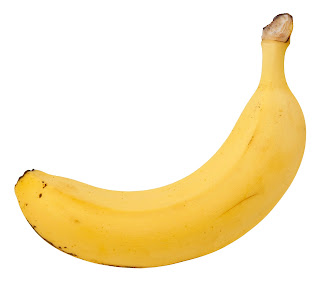Yes, we'll soon have no bananas, At least like the ones we have now.
Guess what the top-selling item is at Walmart?
The banana. And we're running out of bananas as we know them.
A rapidly-spreading fungus is threatening to wipe out the Cavendish banana, the kind we're used to. Panama Disease, or Tropical Race 4, spreads easily and cannot be controlled by fungicides. It has heavily infected Cavendish bananas all over Asia. The spread of the fatal strain of Panama Disease to South America seems to be only a matter of time, and scientists believe that it won't be long until the Cavendish banana ceases to be a viable staple for worldwide consumption
The banana. And we're running out of bananas as we know them.
A rapidly-spreading fungus is threatening to wipe out the Cavendish banana, the kind we're used to. Panama Disease, or Tropical Race 4, spreads easily and cannot be controlled by fungicides. It has heavily infected Cavendish bananas all over Asia. The spread of the fatal strain of Panama Disease to South America seems to be only a matter of time, and scientists believe that it won't be long until the Cavendish banana ceases to be a viable staple for worldwide consumption
Wild bananas are inedible because their flesh is riddled with the hard, undigestable seeds which permit them to reproduce. The bananas we eat are seedless mutant plants which have to be artificially cultivated. All the bananas in grocery stores all over the world are effectively clones of one another. So they're especially vulnerable to scourges like Panama Disease. They can't mutate or evolve in self-defense because their genome is always the same.
We have already endured one bananapocalypse caused by Panama Disease. Have you ever noticed how banana flavored stuff doesn't really taste like bananas? Well, maybe it does. That strange, slightly artificial flavor is said to resemble that of the Gros Michel, the strain that was the world's dominant banana until the 1950's. It was during that decade that a different strain of Panama Disease, which had already begun creating shortages thirty years earlier (giving rise, as you may or may not have suspected, to the song, "Yes, We Have No Bananas") finally rendered the Gros Michel impractical to grow in the numbers necessary to meet the world's demand, and made it necessary for Cavendish to replace it.
The Cavendish was bred to be immune to the strain of Panama Disease which doomed the Gros Michel. But the fungus has evolved to attack the Cavendish, too. The poor thing can no more evolve to defend itself than the Gros Michel could, and the days of the world's standard banana seem numbered for the second time.
This does not mean that bananas themselves will be extinct, however. There are several varieties of banana that could replace the Cavendish, but they won't taste like it any more than the Cavendish tasted like the Gros Michel. The Manzano, which some see as the leading contender to replace the Cavendish, is said to have a flavor which most people like but one that is very dissimilar to that of the Cavendish. Some compare its taste to that of an apple.
Or the new standard banana could be an artificially produced hybrid of the Cavendish and some other strain, preferably resistant to Panama Disease. We're in no danger of losing the banana as such, but once again we may have to get used to a new strain which doesn't taste like what we think of when we think of a banana.
So enjoy your Cavendish bananas while you can. They may soon be only a memory.
Photo by Evan-Amos (Own work) [CC BY-SA 3.0 (http://creativecommons.org/licenses/by-sa/3.0)], via Wikimedia Commons


Comments